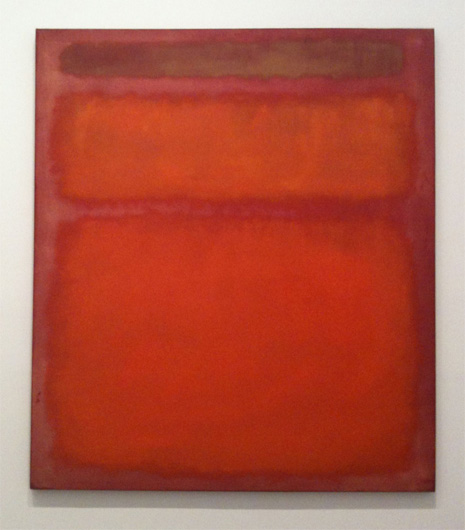
Today was bound to be a fun day. It was sunny, it was Saturday and I was headed to the Philadelphia Museum of Art. It was to be my first trip to the museum and I was excited to go. Although no artist myself — graphic design is my game — I greatly enjoy visiting art museums. The collections of paintings and sculptures from the most talented of artists, from throughout history, well … what better way to spend a morning.
Although the entire experience at the museum (on Twitter at @philamuseum) was really cool, I was particularly blown away getting to see a Mark Rothko painting for the first time. Hardly a knowledgeable fan of art, I first encountered Rothko when I had the opportunity to see the play Red. The play by John Logan is on Broadway and I was lucky enough to catch a performance of the Tony Award winning production. I was gripped by the argument around which the play seemed to focus: what is the purpose of art?
Rather than turn this post into a lengthy discourse in the hopes of answering that previous question, I’ll say instead that the play moved me to investigate the work and life of Rothko. Generally appreciative of abstract art, I find Rothko’s style very much to my liking — the striking, deep, rich tones, the blurred lines between the colors and the size of the paintings themselves all engage my senses in a very moving and striking manner. What a profound experience then, to see a real Rothko painting for the first time. It was cool. It was intense. It was even profound.
I remember my first visit to the Art Institute of Chicago after moving there in 1995.
Walking the halls I would encounter painting after sculpture after whatever, which I would remember having seen in a variety of places (PBS shows, etc.), but especially in humanities textbooks from university.
It always left me dumbstruck that I was actually seeing in person what I had only seen printed on pages in the past. It was awe inspiring in a way I didn’t know was possible.
@ Forkboy,
I have a very similar reaction when I see a famous painting in a museum. Suddenly, I am face-to-face with a piece of work that has been studied by millions of people around the world. There I am, taking in the piece itself. Not a replica, not a photographic impression, and not a copy. It is moving.